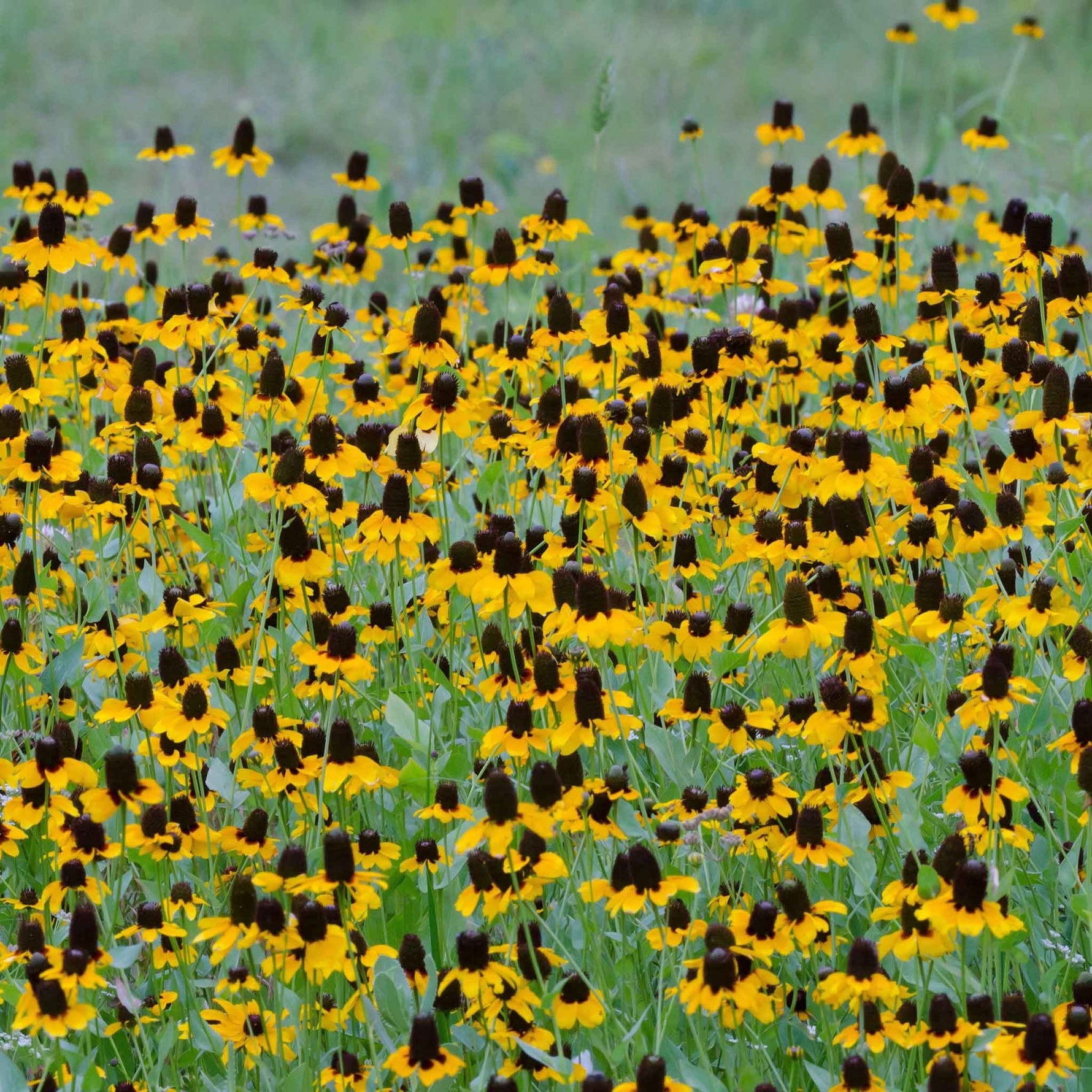
Dharaseeds
Clasping Coneflower Seeds
Estimated Free Delivery between April 16 and April 19.
Secured Payment Methods
Your transaction is protected with advanced security measures to keep your information confidential
The Clasping Coneflower (Rudbeckia amplexicaulis) is a stunning, hardy perennial that features unique flowers with bright, showy yellow petals surrounding a dark brown center. Known for its drought tolerance and adaptability, this native wildflower is an excellent choice for gardeners looking to add a vibrant, long-lasting display to their garden. With its attractive blooms and low maintenance requirements, the Clasping Coneflower is perfect for naturalized areas, wildflower gardens, or as a striking addition to flower beds.
Key Benefits
- Vibrant Yellow Blooms: The Clasping Coneflower produces bright yellow petals that surround a rich, dark center, creating a striking contrast that adds beauty to any garden.
- Low Maintenance: This hardy perennial requires minimal care once established, making it a great choice for beginner gardeners or those looking for a hassle-free plant.
- Drought Tolerant: Once established, this variety is drought-resistant and thrives in dry conditions, making it an excellent choice for low-water gardens.
- Pollinator Friendly: Attracts bees, butterflies, and other beneficial insects, supporting local ecosystems and pollination.
- Long-Lasting Blooms: The Clasping Coneflower blooms from mid-summer to fall, providing months of vibrant color.
Variety Features
- Plant Characteristics: This variety features distinctive clasping leaves that surround the stem, with bright yellow petals and a dark, central cone. It has a compact, bushy growth habit, making it ideal for both border and container planting.
- Flower Colors: Primarily yellow petals with a dark brown or black central cone.
- Growth Habit: Grows in a bushy, upright clump. The plant’s leaves clasp the stem, adding to its unique appearance.
- Size: Typically grows 1.5 to 2 feet tall with a spread of 12–18 inches.
Planting Instructions
Planting Season
- Best sown in early spring after the last frost or in fall for a spring bloom.
Planting Details
- Seed Depth: Sow seeds about 1/8 inch deep.
- Spacing: Space plants 12–18 inches apart to allow for full growth and airflow.
- Soil Requirements: Prefers well-drained, slightly dry to average, moderately fertile soil. A soil pH of 6.0–7.5 is ideal.
- Sunlight: Full sun is preferred for optimal growth, although the Clasping Coneflower can tolerate partial shade.
Care Instructions
Watering
- Water regularly during the initial establishment period, but once the plants are established, they are drought-tolerant and require less frequent watering.
Fertilization
- While it is not necessary to fertilize the Clasping Coneflower, a light application of balanced fertilizer in the spring can promote better blooms. Avoid over-fertilizing, as it may cause the plant to produce more foliage than flowers.
Weeding and Mulching
- Mulch around the base of the plants to retain moisture and suppress weed growth. Keep the area clear of weeds to ensure the coneflowers do not compete for nutrients.
Pest and Disease Control
Pests
- The Clasping Coneflower is relatively pest-resistant but may occasionally attract aphids or caterpillars. Use insecticidal soap or neem oil if pest problems occur.
Diseases
- Clasping Coneflowers are susceptible to fungal diseases like powdery mildew, especially in humid conditions. Ensure adequate spacing and avoid overhead watering to promote good air circulation and reduce disease risks.
Harvesting
Maturity
- The Clasping Coneflower blooms from mid-summer to fall, with flowers maturing in early to late summer.
Seed Harvesting
- After the blooms have faded, allow the seed heads to mature on the plant. Harvest seeds once the cones have dried and the seeds are fully formed.
Storage
Short-Term
- Store harvested seeds in a cool, dry place in an airtight container. They should remain viable for up to 2 years if stored properly.
Long-Term
- For long-term storage, ensure seeds are kept in a dark, dry, and cool environment.
Culinary and Medicinal Uses
- Medicinal Uses: While the Clasping Coneflower is primarily grown for ornamental purposes, members of the Rudbeckia genus are often used in traditional herbal medicine for their immune-boosting and anti-inflammatory properties. However, consult with a healthcare professional before using it for medicinal purposes.
- Non-Culinary: This plant is primarily used for decorative and ecological purposes, attracting pollinators and enriching garden landscapes.
Conclusion
The Clasping Coneflower is an excellent choice for any garden, offering striking yellow blooms and a unique, low-maintenance growth habit. Its drought tolerance, pollinator appeal, and vibrant color make it a standout in wildflower gardens, perennial borders, and naturalized spaces. Whether you're a seasoned gardener or a beginner, the Clasping Coneflower will add lasting beauty and ecological value to your outdoor space.










